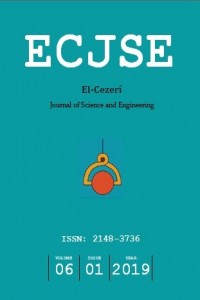A Novel Computer Assisted Sperm Analyzer for Assessment of Spermatozoa Motility in Fish; BASA-Sperm Aqua
Abstract
Bu çalışma, yeni geliştirilen bilgisayar destekli sperm analiz |
References
- Referans 1Kime D.E., Ebrahimi M., Nysten K., Roelants I., Rurangwa E., Moore H.D.M., Ollevier, F., "Use of computer assisted sperm analysis (CASA) for monitoring the effects of pollution on sperm quality of fish; application to the effects of heavy metals" Aquat Toxicol, 1996, 36:223–37.
- Referans 2Kryjak T., Gorgon M., "Real-time implementation of the ViBe foreground object segmentation algorithm". 2013 Fed. Conf. Comput. Sci. Inf. Syst. FedCSIS 2013, 2013.
- Referans 3Boryshpolets S., Kowalski R.K., Dietrich G.J., Dzyuba B, Ciereszko A., "Different computer-assisted sperm analysis (CASA) systems highly influence sperm motility parameters", Theriogenology, 2013, 80(7):758-765.
Balıklarda Spermatozoa Motilite Değerlendirmesi için Yeni Bir Bilgisayar Destekli Sperm Analizörü; BASA-Sperm Akua
Abstract
This study was conducted to determine the working principle and operability of the BASA-Sperm Aqua module software of the newly developed computer-assisted sperm analysis system (BASA) for the evaluation of spermatozoa motility in fish. Sperm samples of trout (Oncorhynchus mykiss) species were examined for this purpose. Sperm motility parameters such as VSL (μm/s), VCL (μm/s), VAP (μm/s), LIN (%), BCF (Hz), ALH (μm), ve MAD (o) were examined. The investigated parameters were compared with data which analyzed in similar computer systems and published in international manuscripts. Finally, the BASA-Sperm Aqua has been found to be a software that performs its functions very quickly and practical and produces accurate and understandable results in the determining sperm quality parameters of fish.
References
- Referans 1Kime D.E., Ebrahimi M., Nysten K., Roelants I., Rurangwa E., Moore H.D.M., Ollevier, F., "Use of computer assisted sperm analysis (CASA) for monitoring the effects of pollution on sperm quality of fish; application to the effects of heavy metals" Aquat Toxicol, 1996, 36:223–37.
- Referans 2Kryjak T., Gorgon M., "Real-time implementation of the ViBe foreground object segmentation algorithm". 2013 Fed. Conf. Comput. Sci. Inf. Syst. FedCSIS 2013, 2013.
- Referans 3Boryshpolets S., Kowalski R.K., Dietrich G.J., Dzyuba B, Ciereszko A., "Different computer-assisted sperm analysis (CASA) systems highly influence sperm motility parameters", Theriogenology, 2013, 80(7):758-765.
Details
| Primary Language | English |
|---|---|
| Subjects | Engineering |
| Journal Section | Makaleler |
| Authors | |
| Publication Date | January 31, 2019 |
| Submission Date | November 21, 2018 |
| Acceptance Date | February 1, 2019 |
| Published in Issue | Year 2019 Volume: 6 Issue: 1 |
Cited By
Melatonin protects sperm cells of Capoeta trutta from toxicity of titanium dioxide nanoparticles
Environmental Science and Pollution Research
Mustafa Erkan Özgür
https://doi.org/10.1007/s11356-020-08273-7
Tire Rubber Based Microplastic Particles Cause Adverse on Quality Parameters of Rainbow Trout Sperm Cells
Bulletin of Environmental Contamination and Toxicology
https://doi.org/10.1007/s00128-024-03951-5
Assessment of semen quality in freshwater mussel Unio elongatulus eucirrus: analysis of sperm motility, morphometry, and pH
Revista Científica de la Facultad de Ciencias Veterinarias
https://doi.org/10.52973/rcfcv-e35636
TOXIC EFFECTS OF GLYPHOSATE AS A HERBICIDE IN AQUATIC ENVIRONMENT: REPRODUCTIVE HEALTH AND SPERM QUALITY PARAMETERS
İnönü Üniversitesi Sağlık Hizmetleri Meslek Yüksek Okulu Dergisi
https://doi.org/10.33715/inonusaglik.1691943


